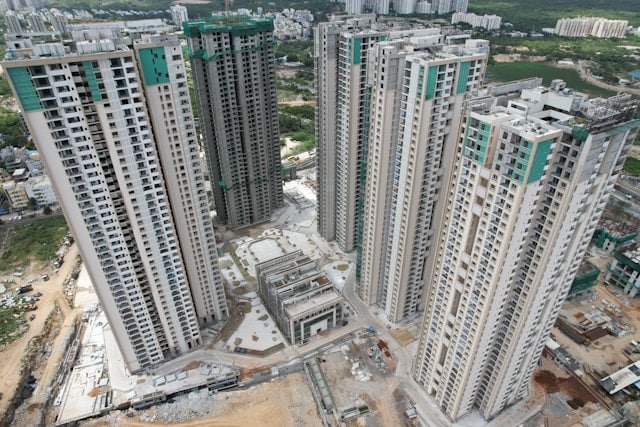How to Develop Age-Inclusive Residential Real Estate Suitable for All Life Stages?

In an era where there is an increasing focus on inclusion, one area that is often overlooked is housing. More communities are now realizing that their housing designs need to cater not just to the young and sprightly, but also the older and slower. It is essential to consider the unique needs and lifestyles of each age group, from children and working adults, to retirees and seniors, in designing homes and living environments. This article explores the importance, concepts, and practical considerations in developing age-inclusive residential real estate.
The Importance of Age-Inclusive Housing Design
Housing is more than just a structure; it is a bastion of safety, comfort, and identity. As people age, their homes should adapt to their changing needs and lifestyles, and not the other way around.
En parallèle : What Are the Strategies for Rehabilitating Deteriorating Infrastructure into Real Estate Assets?
The National Association of Realtors (NAR) highlights the importance of age-inclusive housing design. As people age, their needs and preferences evolve. Children require safe play spaces, adults need a functional workspace, while older adults prioritize accessibility and ease of use. The challenge for community developers and architects is to design a home that caters to these needs, promoting inclusion and intergenerational living.
Concepts in Age-Inclusive Housing Design
To create age-inclusive homes and communities, it is essential to understand the key concepts involved. A Google scholar search on age-inclusive housing design reveals two significant concepts: Universal Design and Aging in Place.
A voir aussi : What Legal Protections Are Essential for Real Estate Crowdfunding Investors?
Universal Design refers to creating a space accessible and usable by everyone, regardless of their age, size, or ability. It emphasizes user-friendly design and equitable use. On the other hand, Aging in Place is a concept that allows people to live in their homes and communities safely, independently, and comfortably, regardless of age or ability.
Practical Considerations for Age-Inclusive Housing
There are several practical considerations when designing age-inclusive housing. These include:
- Accessibility: Homes should be easily navigable, especially for older adults who may have limited mobility. Features such as ramps, wide doorways, and accessible bathroom fixtures are a must.
- Safety: Safe living environments are paramount. This can include non-slip flooring, well-lit spaces, and safety railings.
- Community Amenities: A community that promotes social interaction can enhance the quality of life for all residents. This can include communal spaces like parks, community centers, and accessible public transit.
- Health and Wellness Amenities: These include facilities that promote physical activity and wellness, like fitness centers, walking paths, and access to health care facilities.
The Role of Technology in Age-Inclusive Housing
As we continue to harness the power of technology, it has become an integral part of our homes and communities. Smart homes equipped with the Internet of Things (IoT) can provide safety and convenience features that can benefit all ages, from young adults to seniors.
For instance, virtual assistants like Google Home can help with everyday tasks, from setting reminders to controlling home appliances. For older adults, wearable health technology can monitor vital signs and alert family members or medical professionals in case of any abnormalities. These technological advancements can significantly enhance the comfort and safety of homes, making them more age-inclusive.
The Future of Age-Inclusive Housing
Age-inclusive housing is more than just a trend; it is a necessity in today’s diverse and aging society. Communities around the world can look to best practices from scholars, industry experts, and organizations like NAR and Crossref.
In the future, residential real estate should not just cater to a particular demographic but should aim to be diverse and inclusive. After all, a truly inclusive community is one where people of all ages can live, thrive, and feel valued. As we strive towards that goal, the landscape of residential real estate will inevitably continue to evolve, becoming more inclusive and adaptable to the needs of all its residents.
As we move forward, let’s remember the importance of inclusion and diversity in our residential real estate designs. The homes and communities we develop today will shape the lives of future generations, and it’s upon us to ensure that they are designed for all, regardless of age or ability.
Incorporating Age-Inclusive Designs in Real Estate Development
The real estate sector plays a pivotal role in creating age-friendly environments. Developers can employ age-inclusive design features in their projects to cater to the varying needs of different age groups. They can utilize resources and previous studies available on Google Scholar and other platforms to understand the requirements of older adults and incorporate these elements into their designs.
For instance, physical activity amenities like parks and outdoor spaces can be designed to accommodate both children’s play areas and walking paths for older adults. Encouraging intergenerational interaction and fostering a sense of community are key elements in age-friendly design.
Additionally, incorporating ‘universal design’ principles into projects can ensure access for all, regardless of age or functional limitations. These design features could include elements such as step-free entrances, wider doorways for wheelchair access, and adjustable countertop heights in kitchens.
Continuing education for architects and designers in age-inclusive design can also contribute to the development of more suitable homes for every life stage. These professionals need to understand and adhere to a code of ethics that promotes inclusion and respects the diverse needs of individuals.
Age-Inclusive Living Communities: The Impact on Public Health
Age inclusive housing and living communities can have profound impacts on public health. In comparison to conventional housing, these homes and communities are designed to minimize functional limitations and foster independent living, especially for older people.
Maintaining a healthy lifestyle is integral to aging gracefully, and smart growth in communities can facilitate this. By providing outdoor spaces, walking paths, and community centers, developers can promote physical activity. These elements not only enhance the quality of life for all residents but also reduce the risk of chronic diseases associated with sedentary lifestyles.
Equally important is easy access to healthcare facilities and services. Communities should be designed with quick and efficient access routes to these amenities, ensuring residents can receive timely medical care when needed.
In Conclusion: The Imperative for Age-Inclusive Real Estate Development
As our societies continue to age, the need for age-inclusive residential real estate becomes more pressing. It’s no longer a matter of choice, but a requirement for creating communities that are diverse, inclusive, and beneficial to all life stages.
The challenge for developers, architects, and planners is to continually adapt and innovate in response to these changing needs. Through a commitment to universal design, aging in place, and smart growth, we can create environments where everyone, regardless of age or ability, feels welcome and valued.
In aligning our strategies to these goals, we are not only catering to the needs of our aging society. We are also ensuring the health and wellbeing of all community members. It’s a testament to the power of inclusion in shaping our communities and making them places where all individuals can thrive.
As we move forward, let’s carry the lessons learned from previous studies, adhere to the state and local guidelines, and remember the importance of continuing education in our field. By doing so, we will ensure that the homes and communities we build today are ready for the future, designed to serve and benefit all residents, regardless of their age or ability.
